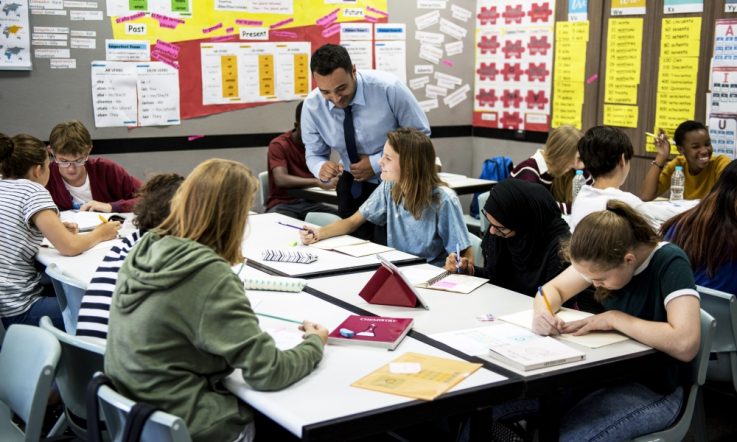All Australian schools and school leaders are currently managing change in response to the COVID-19 pandemic. Even under ‘normal' circumstances, change is a difficult process to lead. How can schools implement effectively and efficiently, to support student learning in such unprecedented times?
Given the nature of the challenge schools are facing, there are likely to be hurdles to any implementation process, no matter how well planned. Effective planning, through an evidence-based implementation process, will allow your school the space to consider the foreseeable challenges, providing greater flexibility in responding to the current circumstances.
While schools work quickly to respond, thoughtful preparation is key – as evidence shows, programs that are implemented effectively improve student outcomes significantly more than those implemented with less fidelity (Durlak & DuPre, 2008). When helping teachers, students and parents to effectively implement home-supported learning one of the crucial elements is having a clear school plan that will assist in building a shared understanding for all involved (Evidence for Learning, 2020; Sharples et al., 2019).
A framework for implementation
Previous Teacher articles have shared: a framework outlining four interconnected phases of implementation, which gives an overview of how a school can undertake a journey for good implementation from adopting a decision to sustained change; and core concepts of implementation in detail (Vaughan & Albers, 2017; Vaughan et al., 2019).
Evidence for Learning's Implementation Guidance Report synthesises best practice about implementation in two sections: understanding the foundations for implementation; and developing actionable steps to implement your approach through four phases – explore, prepare, deliver and sustain.
Remember, the ‘what' and ‘how' of implementation will look different in every school, but with good implementation, you can be more confident about what works in your context. So, what should school leaders be considering during the COVID-19 pandemic?
Considerations for implementation in a global pandemic
The core of your school's implementation plan in response to COVID-19 may be the development of a consistent approach for home-supported learning and encompass a staged return to school approach. Within this, your school will consider what it needs to put in place to support students, staff and community to provide continuity of learning and of relationships, no matter where your students are learning. Here are three considerations:
Professional learning
The Centre for Evidence and Implementation identified ongoing support for teachers during implementation as an important element to improving students' learning outcomes (Albers et al., 2017). Using skilled coaches during this period may be particularly effective, and many schools may find they have educators and support staff that are more comfortable with the change and who are enthusiastic to support their colleagues. Ensure that, in line with an understanding of effective professional learning, there are both initial and follow-up opportunities, as well as time to practise and reflect on how the learning is translating through to teaching practice (Sharples et al., 2019).
Communication
An implementation plan is a useful tool to communicate with staff about the change process, and to set expectations, but communication itself should also exist as a stream of activity within your school's plan. As the need to communicate with families and students increases, schools should have a consistent approach to ensure messages are relevant and having the desired impact (Evidence for Learning, 2019).
Time and space
School leaders should note that, ordinarily, an implementation process would run over roughly a three-year period, in order to embed and sustain the change (Vaughan et al., 2019). The situation that schools are responding to now requires a more rapid response, but there are likely other enabling factors that will counteract the time limitations, such as the aforementioned case for change. Monitoring what is occurring in order to understand not only the impact you are having, but how the change is being felt by students, staff and community, should be a priority.
References
Albers, B., Pattuwage, L. & Vaughan, T. (2017). Summary of key findings of a scoping review of Implementation in Education. Evidence for Learning. http://www.evidenceforlearning.org.au/evidence-informed-educators/implementation-in-education
Durlak, J. A., & DuPre, E. P. (2008). Implementation matters: A review of research on the influence of implementation on program outcomes and the factors affecting implementation. American journal of community psychology, 41(3-4), 327-350.
Evidence for Learning. (2019). Working with parents to support children's learning. https://www.evidenceforlearning.org.au/assets/Guidance-Reports/Parental-engagement/Guidance-Report-Working-with-Parents-to-Support-Childrens-Learning-WEB.pdf (633KB)
Evidence for Learning. (2020). Resources for home-supported learning: Implementing your home-supported learning plan. https://evidenceforlearning.org.au/assets/COVID-19-Home-supported-learning/E4L-Supporting-resources-Implementation-FINAL.pdf (852KB)
Sharples, J., Albers, B., Fraser, S., Deeble, M., & Vaughan, T. (2019). Putting Evidence to Work: A school's Guide to Implementation. https://evidenceforlearning.org.au/guidance-reports/putting-evidence-to-work-a-schools-guide-to-implementation
Vaughan, T., & Albers, B. (2017, June 20). Research to practice – implementation in education. Teacher magazine. https://www.teachermagazine.com/articles/research-to-practice-implementation-in-education
Vaughan, T., Sharples, J., & Borton, J. (2019, April 15). School improvement: Sowing the seeds of success. Teacher magazine. https://www.teachermagazine.com/articles/school-improvement-sowing-the-seeds-of-success
On your own, or with members of your school leadership team, consider the following:
What is the current situation at your school and the needs of the school community? How can this inform planning and implementation in response to COVID-19?
What lessons can be learnt from monitoring the changes you have made so far?
What targeted professional development will support your staff through the next six months?



